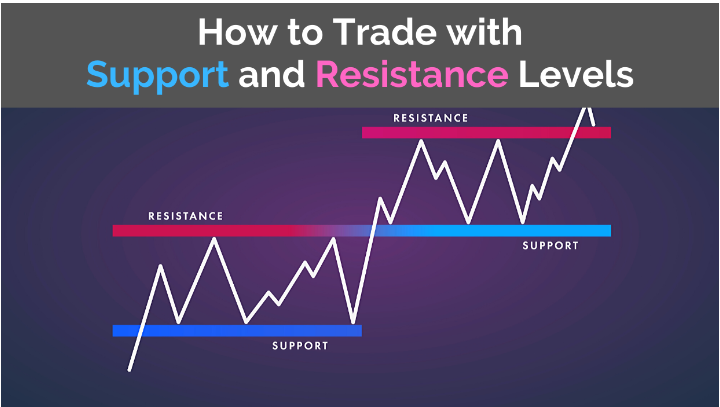How to Use Support and Resistance Levels in Trading
Support and resistance levels are some of the most important and widely used concepts in forex and stock trading. Whether you’re a beginner or an experienced trader, understanding how to use these levels can significantly improve your ability to spot high-probability trade setups, manage risk, and boost your confidence.
In this blog post, we’ll break down what support and resistance are, how to identify them on a chart, and how to use them effectively in your trading strategy.
What Are Support and Resistance Level?
-
Support is a price level where an asset tends to stop falling and may bounce back up. It’s like a “floor” where buyers typically step in.
-
Resistance is a price level where the asset tends to stop rising and may reverse downward. It acts as a “ceiling” where selling pressure increases.
These levels reflect psychological zones in the market areas where traders historically take action.
Why Support and Resistance Matter
Support and resistance levels are crucial for:
-
Finding entry and exit points
-
Setting stop-loss and take-profit levels
-
Understanding price behavior
-
Avoiding emotional decisions
They help you answer questions like:
-
“Where should I buy or sell?”
-
“Is this trend about to reverse?”
-
“Where is a safe place to put my stop loss?”
🔍 How to Identify Support and Resistance Levels
1. Look for Previous Reversal Points
Scroll back on your chart and look for areas where the price repeatedly bounced or reversed. Draw a horizontal line across those zones.
2. Use Candlestick Patterns
Support and resistance zones are clearer when you spot patterns like:
-
Pin bars or dojis near key levels
-
Double tops and bottoms
-
Engulfing candles
3. Use Round Numbers
Prices ending in .000, .500, or .800 often act as natural psychological levels.
4. Apply Moving Averages
Dynamic support and resistance can come from moving averages like the 50 EMA or 200 EMA.
5. Use Tools Like Trendlines and Fibonacci Levels
Sloping trendlines can serve as diagonal support or resistance. Fibonacci retracement levels (like 38.2%, 50%, 61.8%) also act as key zones.
📈 How to Trade Using Support and Resistance
✅ 1. Trade the Bounce
-
Wait for price to touch a support/resistance level and show signs of reversal.
-
Confirm the bounce with candlestick patterns or indicators (like RSI).
-
Place your stop loss just beyond the level in case of a breakout.
Example: Buy near support when price bounces up with a bullish pin bar.
🚀 2. Trade the Breakout
-
Sometimes, price breaks through support or resistance with strong momentum.
-
Wait for a confirmed breakout with a full candle close beyond the level.
-
Optionally, wait for a retest of the broken level before entering (support becomes resistance, and vice versa).
Example: Sell after price breaks below support and retests it from below.
🔁 3. Use Support and Resistance in Ranging Markets
-
In sideways markets, price bounces between support and resistance.
-
Buy at support, sell at resistance, and repeat — until the range breaks.
🛠️ Support and Resistance + Indicators
You can combine S&R with indicators for better accuracy:
| Indicator | How It Helps |
|---|---|
| RSI | Confirms overbought/oversold zones at key levels |
| MACD | Confirms momentum near support/resistance |
| Moving Averages | Act as dynamic S&R lines themselves |
💡 Tips for Using Support and Resistance
-
Don’t treat levels as exact prices — think of them as zones or areas.
-
Use multiple time frames to spot stronger support/resistance.
-
Avoid trading directly into strong levels — wait for confirmation.
-
Always use stop-loss orders to manage risk if the level breaks unexpectedly.
✅ Final Thoughts
Support and resistance levels are powerful tools for any trader. They simplify the market and give you structure — showing you where price is likely to react, and helping you plan your trades logically, not emotionally.
As a beginner, focus on:
-
Drawing clean horizontal lines
-
Practicing on demo charts
-
Combining levels with basic price action
With time and experience, using support and resistance will become second nature.


